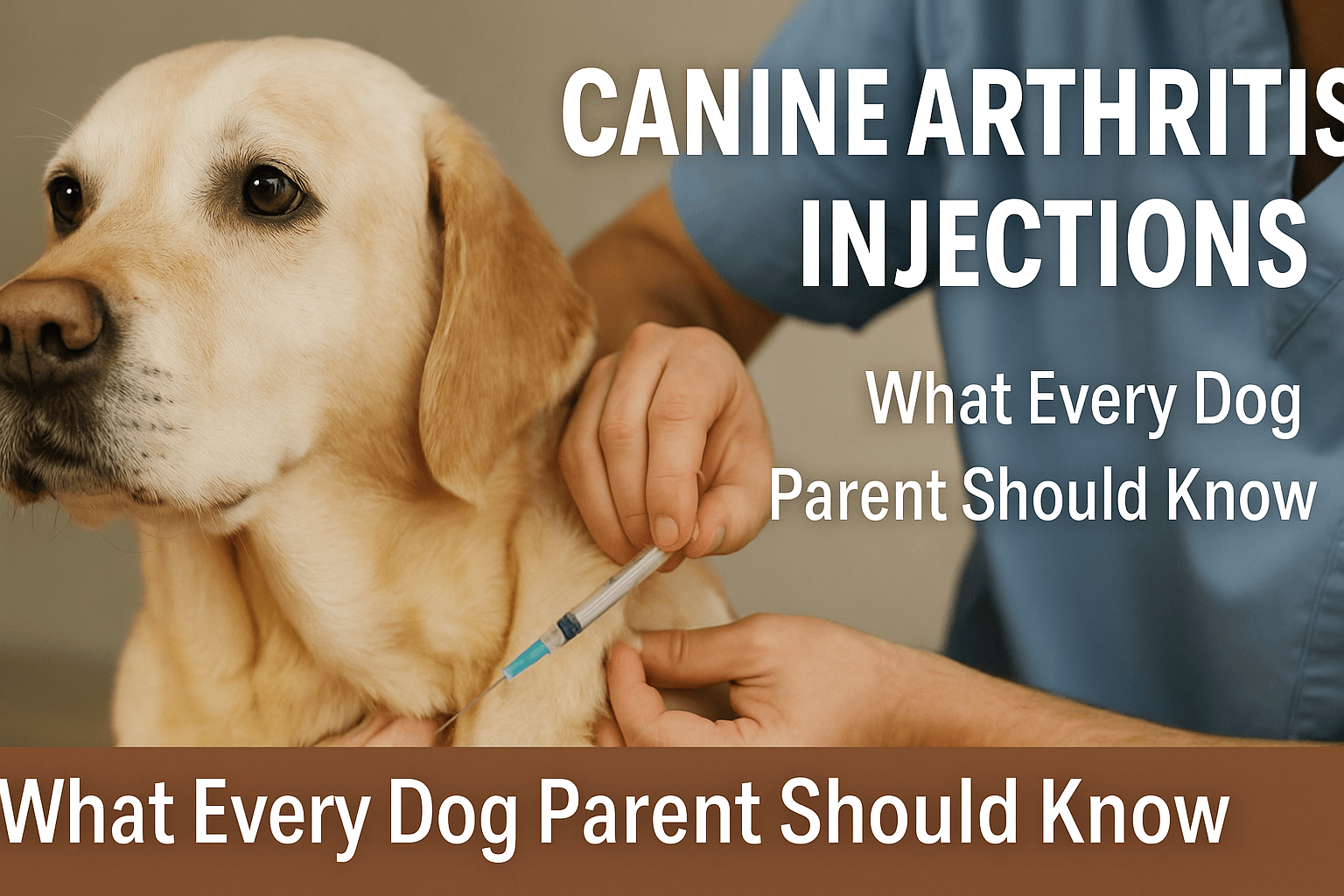If you’ve noticed your pup moving slower, hesitating on stairs, or limping after playtime, arthritis might be to blame. As a certified pet blogger and lifelong dog mom, I know firsthand how heartbreaking it is to see your once-bouncy buddy struggle with joint pain. The good news? Canine arthritis injections are one of the most effective dog arthritis treatments available today.
🐾 What Is Arthritis in Dogs?
Arthritis in dogs—especially in their legs and hips—is a degenerative condition that causes inflammation in the joints. It’s incredibly common in senior pups but can affect dogs of any age, breed, or size. You might notice signs like stiffness, reduced activity, or even a grumpy attitude (because hey, pain’s no fun).
💉 How Do Canine Arthritis Injections Work?
Unlike oral canine arthritis meds, injections deliver relief straight to the source. Vets typically use:
- Pentosan polysulfate sodium (PPS) – helps rebuild cartilage and improve joint lubrication.
- Polysulfated glycosaminoglycans (Adequan®) – promotes cartilage repair and reduces inflammation.
- Hyaluronic acid or corticosteroids – for advanced pain relief and swelling control.
These injections are often given in a series (once or twice weekly) and then spaced out to maintain effects. Many pet parents report seeing a noticeable improvement in mobility and comfort within just a few weeks.
🏡 How to Help a Dog with Arthritis at Home
Injections are powerful, but your dog’s arthritis journey doesn’t stop at the vet’s office. Here’s how to help a dog with arthritis at home and boost their comfort:
- Orthopedic bedding: A soft, supportive bed eases pressure on joints.
- Ramps or stairs: Avoid the strain of jumping on couches or beds.
- Gentle exercise: Daily low-impact walks or swimming keep joints moving.
- Joint supplements: Glucosamine and chondroitin can complement injections.
- Warm compresses: Perfect for soothing those stiff morning joints.
Looking for more wellness tips? Check out more healthy treats for dogs that support joint health!
🧪 Are There Side Effects?
Most dogs tolerate arthritis injections very well. Mild side effects like swelling at the injection site or temporary lethargy are rare but possible. Always monitor your pup after each visit and keep your vet in the loop.
🐶 My Experience with Bella
My 10-year-old Lab mix, Bella, started showing signs of stiffness and limping last fall. After trying natural dog arthritis remedies with little success, our vet recommended Adequan injections. By her fourth dose, Bella was back to climbing hills and chasing squirrels (with moderation, of course!). The change was nothing short of inspiring.
📝 Final Thoughts: Is It Right for Your Dog?
Injections may not be the first thing you consider when wondering how to treat arthritis in dogs, but they’re certainly worth exploring. Whether your dog is just starting to show signs or has been battling joint pain for years, these treatments can offer serious canine joint pain relief.
Remember, no single solution fits all dogs. Always consult your vet and work together on the best approach for your furry friend.
✅ Quick Recap: What Can I Give My Dog for Arthritis?
- Vet-prescribed injections (like Adequan or PPS)
- Daily joint supplements
- Anti-inflammatory meds, if recommended
- Weight management and low-impact exercise
Your dog deserves a pain-free, tail-wagging life—and with today’s options, it’s absolutely possible.
Frequently Asked Questions (FAQs)
1. What are the best injections for arthritis in dogs?
2. Are arthritis injections safe for all dogs?
3. How fast do arthritis injections work in dogs?
4. Can I combine injections with other arthritis treatments?
5. What’s the cost of arthritis injections for dogs?
6. How can I help my dog with arthritis at home?

About SniffnTail
SniffnTail is your go-to destination for everything pets. From helpful advice, tips, and insights to thoughtfully selected products and resources, we’re here to support pet owners at every stage of their journey. Whether you're caring for a playful pup, a wise old cat, or anything in between, SniffnTail offers tools and knowledge to make pet parenting easier and more joyful.
Related Articles
 Health & Wellness • 7 min read
Health & Wellness • 7 min readCommon Skin Problems in Dogs: Causes, Symptoms & Effective Treatments
Learn how to identify, treat, and prevent common dog skin problems like itchy skin, hot spots, and dermatitis. Expert tips, vet-recommended solutions, and home remedies included.
 Health & Wellness • 6 min read
Health & Wellness • 6 min readHow Do Dogs Feel After Grooming? Facts & Vet-Verified Tips to Help
Wondering how dogs feel after grooming? Discover vet-verified facts, signs of happy pups, and expert tips to help your dog relax and enjoy post-grooming care.
 Health & Wellness • 6 minutes
Health & Wellness • 6 minutesThe Link Between Bad Dog Breath and Dental Disease
Discover how bad dog breath is more than a nuisance—it's a sign of potential dog dental disease. Learn symptoms, causes, and what pet parents can do to protect their dog's oral health.

